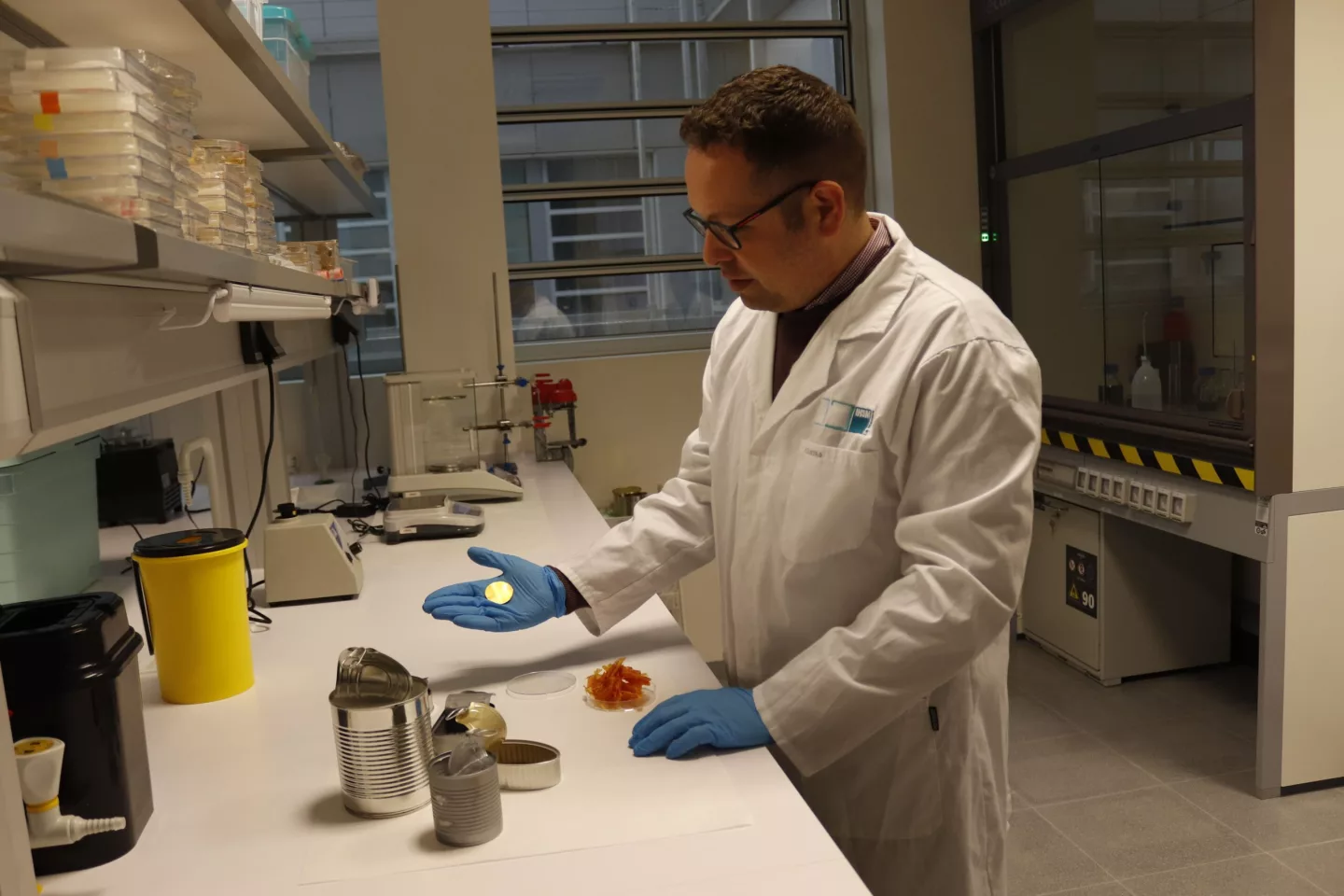You may have heard how the BPA (bisphenol A) in some food-packaging plastics has been linked to various health problems. Scientists are thus developing a more innocuous alternative, and it's made from tomato waste which would otherwise be discarded.
In recent years, studies have suggested that ingestion of BPA may lead to problems including heart disease, infertility, diabetes, and developmental difficulties in children. As a result, we now see products such as water bottles being advertised as "BPA-free."
That said, the compound is still widely used in the plastic coatings which are applied to the inside of metal food packaging such as cans. These slick watertight coatings help protect the metal from corrosion, plus they keep the food from sticking to the inside of the container.
Building on previous studies, an international team led by researchers from Spain's La Mayora Institute of Subtropical and Mediterranean Horticulture – and the Institute of Materials Science of Seville – have looked to a type of agricultural waste known as tomato pomace.
This material typically consists of tomato skins, seeds and stalks, which are left over after the fruits have been processed for use in foods such as sauces or juices. Ordinarily, the pomace is simply dumped in a landfill, burned, or at best composted. It may also be used in animal feed, although it doesn't have much nutritional value.

The scientists started by drying tomato pomace – first in the sun for three days, then in a 60 ºC (140 ºF) oven for 16 hours – after which they ground it into a powder. That powder was subsequently mixed with a sodium hydroxide solution, which was then heated at 100 ºC (212 ºF) for four hours. After repeatedly filtering that solution to remove the sodium hydroxide, the researchers were left with a waxy compound known as a lipid.
That lipid was then mixed into an ethyl alcohol solution which was sprayed onto samples of aluminum, tin-free steel and tin-coated steel. Once the spray had dried and the samples had been heated in a 200 ºC (392 ºF) oven for 10 to 60 minutes, the result was a polymerized lacquer coating which proved to be very effective at protecting the underlying metal.
It did particularly well with the aluminum, keeping it from oxidizing even after being immersed in salty water for 170 hours. The lacquer was also highly hydrophobic (water-repellent), it adhered well to the metals, and it didn't leach out into the water over time.
The scientists now plan on testing the coating on actual cans, containing a variety of foods. "We would take tomato sauce, tuna, and other foods that are usually sold in cans, and we would sterilize them, put them in tins and check if they withstand real conditions," said La Mayora's Alejandro Heredia.
The research is described in a paper that was recently published in the Journal of Cleaner Production.
Source: Fundación Descubre





